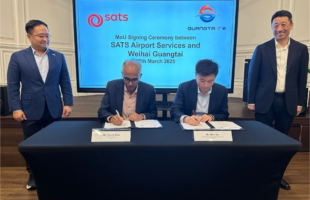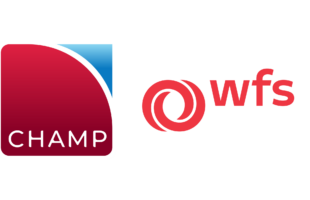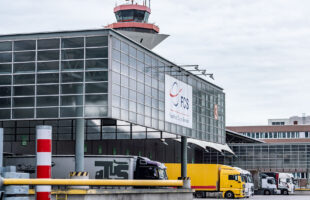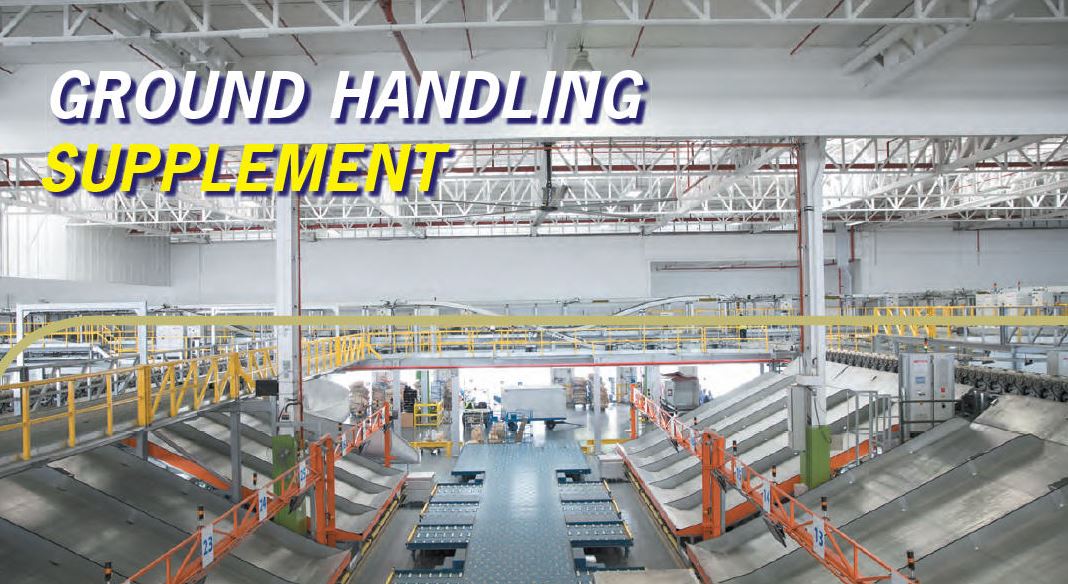
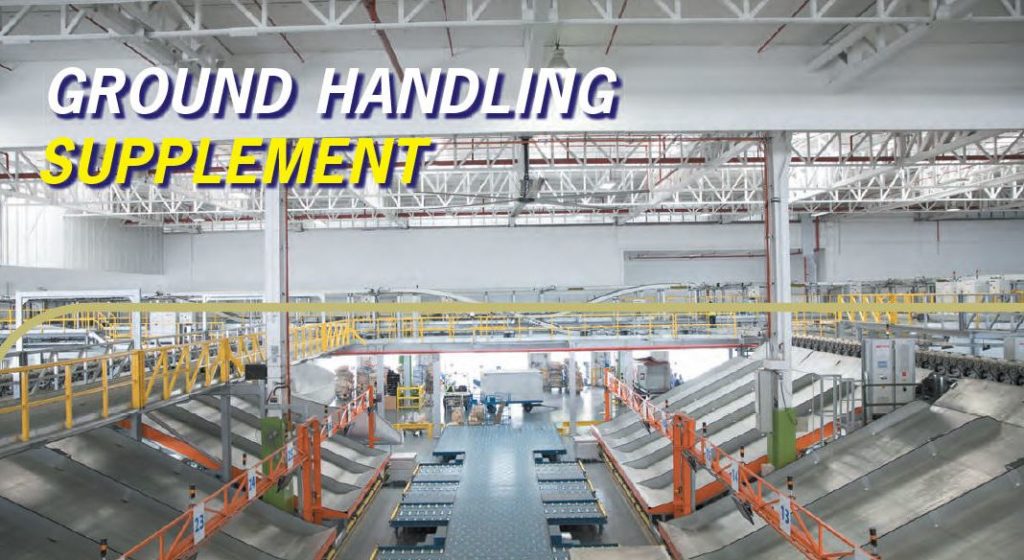
SATS Ltd
A recap of 2017
In the first 11 months of 2017 (Jan to Nov), Changi Airport handled a total of 1.94M tonnes of cargo. This is an 8 per cent increase from the 1.79M tonnes of cargo handled in Jan to Nov 2016. Likewise, SATS has also seen a satisfactory increase in the volume of cargo handled in the air freight terminals in Singapore, and in its associate companies/subsidiaries across Asia and the Middle East.
There have been a few notable achievements for SATS’ cargo handling during past year, with the following being the most noteworthy:
On 13th April 2017, SATS unveiled its new eCommerce AirHub. This state-of-the-art automated airside eCommerce mail sortation hub is the first in the region, and has multiplied mailbag processing capacity by more than three times. The automation used reduces mail processing time by 50%, hence enhancing Changi’s eCommerce mail sorting capability to support the growing eCommerce market. In addition, it also features new innovations that improve productivity and enable airport workers to acquire new skills.
The 17th of April 2017, saw the official announcement that SATS is the world’s first ground handler to receive European Union (EU) approval as an authorised establishment for the provision of multi-modal meat transshipment services between New Zealand and the EU. These shipments could now transit through Singapore via SATS Coolport, Asia’s first on-airport perishable handling centre. SATS successfully handled the first air-sea transshipment of lamb products from New Zealand to the United Kingdom (UK) in Jan 2017.
SATS also became the first ground handling company to install the SMARTGate Volumetric Scanner in Asia, in Changi Air Freight Terminal 3, which is a system that is aimed at further advancing the digitalisation of freight handling processes on July 25th 2017. The SMARTGate comprises of a volumetric scanning module and weighing scale, making it capable of measuring the weight and volume of shipments simultaneously within seconds. This new technology not only allows the measurements to be recorded in the database automatically, but also enhances accuracy in dimension checks and thereby increases productivity and efficiency.
On 5th September 2017, SATS announced the introduction of augmented reality (AR) smart glasses in its operations. This device provides operators with critical information such as loading instructions in real-time. With this technology, they are able to scan visual markers found on baggage and cargo containers that provide details such as weight, unit number, loading sequence and the allocated position within the aircraft. This hands-free process improves safety, and increases the accuracy and efficiency of baggage and cargo loading. It potentially shortens loading times by as much as 15 minutes, thus creating competitive advantages for airline customers who could reduce waiting times for passengers and shorten transit times for air freight shippers.
Expectations of the future
2017 has been a good year for the cargo handling business worldwide with average high single-digit growth. As for future expectations, airlines and cargo forwarders predict the first half of 2018 would continue to grow, whilst the second half could see a decline in the growth rate. Hence, general expectations seem to indicate a smaller single-digit growth worldwide. However, there could be an exception where cargo tonnage growth at SATS’ overseas joint venture companies is concerned, which is at the Asia Airfreight Terminal in Hong Kong. Asia Airfreight Terminal Company Limited (“AAT”) is an associate company of SATS, and SATS is its largest shareholder, with a 45 per cent shareholding. In March 2017, it was announced that Hong Kong Airlines and its cargo subsidiary Hong Kong Air Cargo Carrier (an all-cargo carrier established in April 2017 providing international air freight transportation services to more than 15 destinations) would be moving their cargo operations to Asia Airfreight Terminal (AAT). This move was completed on 8th Nov 2017, and cargo for both airlines is now handled by AAT. This has contributed significantly to the increase in the scale of AAT operations, and hence it is expected that there would be substantial growth in cargo handling at AAT in 2018.
As for other plans, there are a number of potential overseas projects which would contribute to growth if these are materialised. For now, the main new revenue drivers are eCommerce transshipment, and temperature-controlled perishables and pharmaceutical shipments. Having successfully obtained EU approval to provide multi-modal meat transshipment services between New Zealand and the EU, SATS is now working towards achieving the same for meat transshipment from Australia as well.
Hong Kong Air Cargo Terminals Limited (Hactl)
A snapshot of 2017
2017 has been a solid year for Hactl who are up 12 per cent to date. The growth has even continued into the final quarter, despite being compared to last year’s strong peak. Although there is universal growth across the industry and in Hong Kong, Hactl is outperforming both. “There are a number of factors behind this: the success of its 100+ airline customers in increasing market share, the fact that we have put on significant new business such as Vietjet and Virgin Australia, and particularly as a result of our proactive drive to bring more cargo through Hong Kong. One example of this is the work which our value-added logistics subsidiary, Hacis, has been doing with postal authorities to provide a viable alternative gateway for e-commerce traffic containing lithium batteries. This is generating 1,000 mail bags every day, to the benefit of our airline customers and ourselves ,“ said Mark Whitehead, chief executive of Hactl.
Plans and expectations for 2018
Hactl is at an advanced stage of replacing the operating systems for its automated handling equipment with state-of-the-art, future-proof and more robust technology. This three- year project is being handled in-house by a highly-experienced Information Services team, will consume 100 man-years of development work, and will represent an investment of around US$10 million. It is one of the many examples of how Hactl continues to invest in its business to create greater efficiencies, improve customers’ competitiveness, and enhance service standards.
“We have recently introduced VR (virtual reality) training, to provide more effective and efficient initial training for our new ramp handling trainees, away from the hazards of the live ramp environment. We intend to leverage this technology across wider applications in due course, “ shared Whitehead.
Hacis will be announcing its ninth cargo depot shortly. This will be located in the western Pearl River Delta, to enable us to take maximum advantage of the Hong Kong-Zhuhai-Macau Bridge when it opens, slashing truck transit times to a third. Hacis will also uprate its RFS network and frequencies, enabling Hactl carriers to extend the reach of their HKG services, and so achieve better utilisation of their capacities. Hacis’ focus on e-commerce will continue, and expected organic growth in this sector – both inbound and outbound – as well as the clear adoption of bulk shipping in e-commerce supply chains, are likely to provide handsome rewards. “We expect 2018 to continue in a growth trajectory, although this will likely be moderate compared to 2017. But Hactl’s continuing investments and proactive marketing should ensure that we and our customers have the opportunity to continue out-performing the industry in 2018,” concluded Whitehead.
Shanghai Pudong Int’l Airport Cargo Terminal (PACTL)
Looking back on 2017
“We have seen a very successful year in 2017 for the whole air cargo industry, and this success of course includes PACTL. By the end of November 2017, our annual cargo & mail throughputs accumulated to over 1.7 million tons, nearly a 12.5 per cent year-on-year increase, in which international business grew by 13.7 per cent, and domestic business dropped slightly though still remained within forecasts. This November, we handled 176,046 tons and refreshed our internal best month record. Th ere is no doubt we are going to end on a very strong note in 2017,” said Christian Haug, VP of PACTL
With regard to airline customers, Pactl have welcomed the participation of two new airlines- UPS and Lion Air, taking them to a total of 58 airlines being served and over 250 forwarding agents. Apart from this, Pactl is also working on a series of optimisation plans to improve its current facilities, operation procedures and site planning to meet rapid volume growth and special handling demands from customers on a daily basis.
“We believe this plan f o r optimisation is a sustainable one, and we are confident that we will be able to offer quality service to each and every customer, whenever and wherever they require it,” elaborated Huang.
PACTL- NTG, the first investment cargo terminal of PACTL launched in November 2017, has successfully introduced PACTL’s management system and professional air cargo handling experience to the public. It handled its first international freighter charter flight this October.
Currently, plans are ongoing to work on fine tuning several aspects, i.e. warehouse expansion, customs and chartering plans with related companies and authorities to develop new services in the future.
Plans and expectations for 2018
Says Huang: “We will continue what we have been doing so far, constantly working on improving our core business.
In the meantime, we will also place more focus on digitisation developments in the air cargo industry, and search for more potential cooperation options outside of Shanghai too.”
Ambitious WFS is ruling nothing out in its drive for growth
2017 has been a busy and successful year for Worldwide Flight Services (WFS), the world’s largest air cargo handler, both in terms of freight volumes across its global network and its strategic development.
With over 300 airline customers at some 195 stations in 21 countries, WFS has benefitted more than most from the surge in demand for cargo capacity in 2017. Barry Nassberg, group chief commercial officer, is upbeat that volumes will remain buoyant in 2018, boosted by the strong growth of pharmaceutical and ecommerce shipments as well as general cargo.
Behind the scenes, WFS has also been busy. Under the leadership of Group CEO, Craig Smyth, who took over the post 18 months ago, WFS has a new executive team at its headquarters in Paris responsible for setting and implementing the future direction of the company, and providing support for its global management team. Underpinning everything is a commitment to be a world leader in safety and security, which, in 2017, has seen a major investment in technology, systems and processes at its US stations. WFS is also focused on enhancing and consolidating its global IT systems.
Last year saw the full integration of Consolidated Aviation Services (CAS) in the United States, acquired by WFS in 2016. WFS ended 2017 in North America by signing a 15-year lease on a new state-of-the-art, 346,00 square foot cargo terminal, the first phase of the Port Authority of New York and New Jersey’s comprehensive Vision Plan to enhance the international reputation of John F. Kennedy International Airport. The facility, which will have a throughput capacity of over 300 million kilos a year, will offer improved cargo flows and reduced transfer times, shorter truck waiting times and incorporate the latest security and screening systems and procedures.
WFS is already one of the largest handlers at JFK, handling over 650,000 tonnes of cargo a year for nearly 70 airlines at its nine facilities at the airport, currently spanning a footprint of over 760,000 sq ft. The projected opening of the new building in Q4 2020 supports WFS’ commitment to the highest standards of safety, security and service, and will also enable it to offer JFK’s first dedicated facilities for temperature-controlled pharmaceutical products and perishables cargoes.
Alongside its airline customers, WFS is ramping up and enhancing its ability to handle temperature-controlled products . In addition to its plans in New York, it has recently opened new pharma facilities in Brussels and Copenhagen, and more will follow. It is also working hard to achieve Good Distribution Practice (GDP) or IATA CEIV Pharma certification at major stations with high volumes of these products. Miami gained CEIV status in 2017, as did Brussels.
Looking at plans for 2018 and beyond, Barry Nassberg said: “We are evolving as a business to reflect the changes happening in the market and to meet our customers’ requirements. We are investing in areas where we see strong growth potential for WFS through helping our customers grow their revenues. That means a strong focus on pharma and we’re looking at a variety of ways to offer a fresh approach for ecommerce too, including off-airport warehousing, deconsolidation and distribution facilities. We don’t want to rule out any opportunities, we are engaging with our customers to see what they need.
“Our business in Europe and the U.S. delivered consistent year-on-year growth in 2017 and we expect that to continue. In Asia, where we have our very successful Bangkok Flight Services (BFS) joint venture, we are looking at a couple of new opportunities. Overall, however, Asia Pacific remains a hard market to break into. We also want to look at the potential for WFS to the east of central Europe and in other parts of South America to build on our existing operations in Brazil. The one thing we won’t be doing in 2018 is standing still.”




